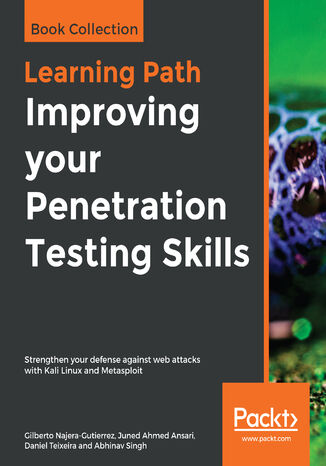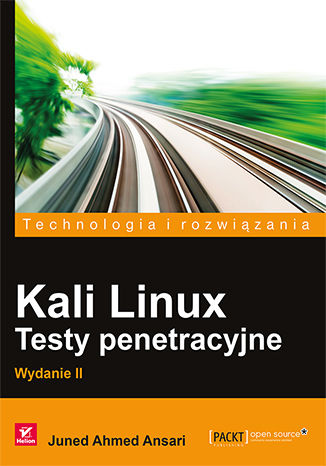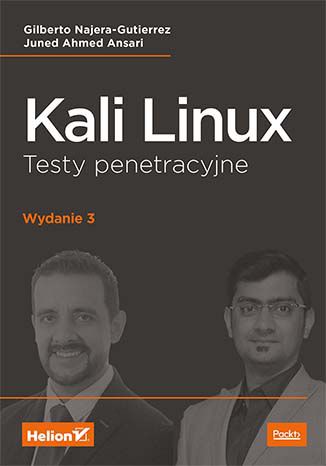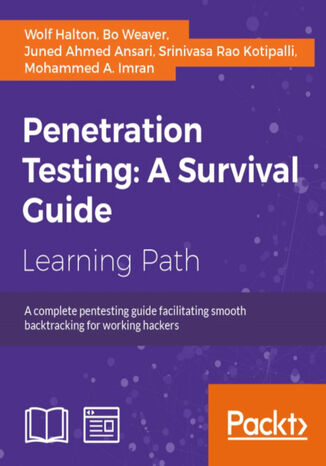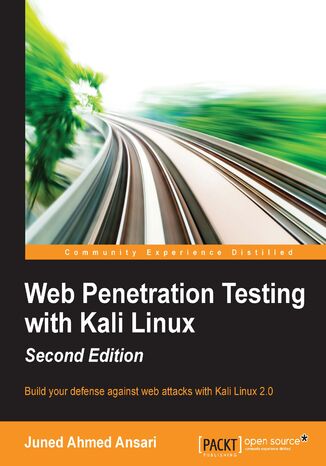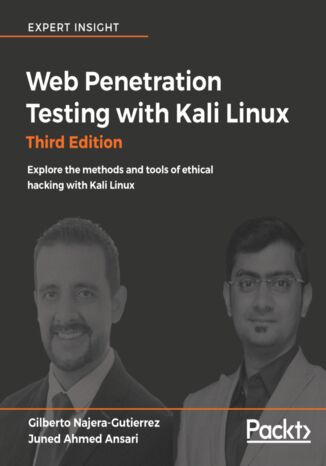Kategorien
-
- Bitcoin
- Geschäftsfrau
- Coaching
- Controlling
- E-Business
- Ökonomie
- Finanzen
- Börse und Investitionen
- Persönliche Kompetenzen
- Computer im Büro
- Kommunikation und Verhandlungen
- Kleines Unternehmen
- Marketing
- Motivation
- Multimedia-Training
- Immobilien
- Überzeugung und NLP
- Steuern
- Sozialpolitik
- Handbȕcher
- Präsentationen
- Führung
- Public Relation
- Berichte, Analysen
- Geheimnis
- Social Media
- Verkauf
- Start-up
- Ihre Karriere
- Management
- Projektmanagement
- Personal (HR)
-
- Architektura i wnętrza
- Sicherheit und Gesundheit am Arbeitsplatz
- Biznes i Ekonomia
- Haus und Garten
- E-Business
- Ekonomia i finanse
- Esoterik
- Finanzen
- Persönliche Finanzen
- Unternehmen
- Fotografie
- Informatik
- HR und Gehaltsabrechnung
- Frauen
- Computer, Excel
- Buchhaltung
- Kultur und Literatur
- Wissenschaftlich und akademisch
- Umweltschutz
- meinungsbildend
- Bildung
- Steuern
- Reisen
- Psychologie
- Religion
- Landwirtschaft
- Buch- und Pressemarkt
- Transport und Spedition
- Gesundheit und Schönheit
-
- Office-Programme
- Datenbank
- Bioinformatik
- IT Branche
- CAD/CAM
- Digital Lifestyle
- DTP
- Elektronik
- Digitale Fotografie
- Computergrafik
- Spiele
- Hacking
- Hardware
- IT w ekonomii
- Wissenschaftliche Pakete
- Schulbücher
- Computergrundlagen
- Programmierung
- Mobile-Programmierung
- Internet-Server
- Computernetzwerke
- Start-up
- Betriebssysteme
- Künstliche Inteligenz
- Technik für Kinder
- Webmaster
-
- Anthologien
- Ballade
- Biografien und Autobiografien
- Für Erwachsene
- Drama
- Tagebücher, Memoiren, Briefe
- Epos
- Essay
- Science Fiction
- Felietonys
- Fiktion
- Humor, Satire
- Andere
- Klassisch
- Krimi
- Sachbücher
- Belletristik
- Mity i legendy
- Nobelpreisträger
- Kurzgeschichten
- Gesellschaftlich
- Okultyzm i magia
- Erzählung
- Erinnerungen
- Reisen
- Gedicht
- Poesie
- Politik
- Populärwissenschaftlich
- Roman
- Historischer Roman
- Prosa
- Abenteuer
- Journalismus
- Reportage
- Romans i literatura obyczajowa
- Sensation
- Thriller, Horror
- Interviews und Erinnerungen
-
- Archäologie
- Bibliotekoznawstwo
- Filmwissenschaft
- Philologie
- Polnische Philologie
- Philosophie
- Finanse i bankowość
- Erdkunde
- Wirtschaft
- Handel. Weltwirtschaft
- Geschichte und Archäologie
- Kunst- und Architekturgeschichte
- Kulturwissenschaft
- Linguistik
- Literaturwissenschaft
- Logistik
- Mathematik
- Medizin
- Geisteswissenschaften
- Pädagogik
- Lehrmittel
- Populärwissenschaftlich
- Andere
- Psychologie
- Soziologie
- Theatrologie
- Teologie
- Theorien und Wirtschaftswissenschaften
- Transport i spedycja
- Sportunterricht
- Zarządzanie i marketing
-
- Sicherheit und Gesundheit am Arbeitsplatz
- Geschichte
- Verkehrsregeln. Führerschein
- Rechtswissenschaften
- Gesundheitswesen
- Allgemeines. Wissenskompendium
- akademische Bücher
- Andere
- Bau- und Wohnungsrecht
- Zivilrecht
- Finanzrecht
- Wirtschaftsrecht
- Wirtschafts- und Handelsrecht
- Strafrecht
- Strafrecht. Kriminelle Taten. Kriminologie
- Internationales Recht
- Internationales und ausländisches Recht
- Gesundheitsschutzgesetz
- Bildungsrecht
- Steuerrecht
- Arbeits- und Sozialversicherungsrecht
- Öffentliches, Verfassungs- und Verwaltungsrecht
- Familien- und Vormundschaftsrecht
- Agrarrecht
- Sozialrecht, Arbeitsrecht
- EU-Recht
- Industrie
- Agrar- und Umweltschutz
- Wörterbücher und Enzyklopädien
- Öffentliche Auftragsvergabe
- Management
-
- Afrika
- Alben
- Südamerika
- Mittel- und Nordamerika
- Australien, Neuseeland, Ozeanien
- Österreich
- Asien
- Balkan
- Naher Osten
- Bulgarien
- China
- Kroatien
- Tschechische Republik
- Dänemark
- Ägypten
- Estland
- Europa
- Frankreich
- Berge
- Griechenland
- Spanien
- Niederlande
- Island
- Litauen
- Lettland
- Mapy, Plany miast, Atlasy
- Miniführer
- Deutschland
- Norwegen
- Aktive Reisen
- Polen
- Portugal
- Andere
- Przewodniki po hotelach i restauracjach
- Russland
- Rumänien
- Slowakei
- Slowenien
- Schweiz
- Schweden
- Welt
- Türkei
- Ukraine
- Ungarn
- Großbritannien
- Italien
-
- Lebensphilosophien
- Kompetencje psychospołeczne
- zwischenmenschliche Kommunikation
- Mindfulness
- Allgemeines
- Überzeugung und NLP
- Akademische Psychologie
- Psychologie von Seele und Geist
- Arbeitspsychologie
- Relacje i związki
- Elternschafts- und Kinderpsychologie
- Problemlösung
- Intellektuelle Entwicklung
- Geheimnis
- Sexualität
- Verführung
- Aussehen ind Image
- Lebensphilosophien
-
- Bitcoin
- Geschäftsfrau
- Coaching
- Controlling
- E-Business
- Ökonomie
- Finanzen
- Börse und Investitionen
- Persönliche Kompetenzen
- Kommunikation und Verhandlungen
- Kleines Unternehmen
- Marketing
- Motivation
- Immobilien
- Überzeugung und NLP
- Steuern
- Sozialpolitik
- Handbȕcher
- Präsentationen
- Führung
- Public Relation
- Geheimnis
- Social Media
- Verkauf
- Start-up
- Ihre Karriere
- Management
- Projektmanagement
- Personal (HR)
-
- Anthologien
- Ballade
- Biografien und Autobiografien
- Für Erwachsene
- Drama
- Tagebücher, Memoiren, Briefe
- Epos
- Essay
- Science Fiction
- Felietonys
- Fiktion
- Humor, Satire
- Andere
- Klassisch
- Krimi
- Sachbücher
- Belletristik
- Mity i legendy
- Nobelpreisträger
- Kurzgeschichten
- Gesellschaftlich
- Okultyzm i magia
- Erzählung
- Erinnerungen
- Reisen
- Poesie
- Politik
- Populärwissenschaftlich
- Roman
- Historischer Roman
- Prosa
- Abenteuer
- Journalismus
- Reportage
- Romans i literatura obyczajowa
- Sensation
- Thriller, Horror
- Interviews und Erinnerungen
-
- Archäologie
- Philosophie
- Wirtschaft
- Handel. Weltwirtschaft
- Geschichte und Archäologie
- Kunst- und Architekturgeschichte
- Kulturwissenschaft
- Literaturwissenschaft
- Mathematik
- Medizin
- Geisteswissenschaften
- Pädagogik
- Lehrmittel
- Populärwissenschaftlich
- Andere
- Psychologie
- Soziologie
- Teologie
- Zarządzanie i marketing
-
- Lebensphilosophien
- zwischenmenschliche Kommunikation
- Mindfulness
- Allgemeines
- Überzeugung und NLP
- Akademische Psychologie
- Psychologie von Seele und Geist
- Arbeitspsychologie
- Relacje i związki
- Elternschafts- und Kinderpsychologie
- Problemlösung
- Intellektuelle Entwicklung
- Geheimnis
- Sexualität
- Verführung
- Aussehen ind Image
- Lebensphilosophien
Gilberto Najera-Gutierrez, Juned Ahmed Ansari, Daniel Teixeira, Abhinav Singh
Penetration testing (or ethical hacking) is a legal and foolproof way to identify vulnerabilities in your system. With thorough penetration testing, you can secure your system against the majority of threats.This Learning Path starts with an in-depth explanation of what hacking and penetration testing are. You’ll gain a deep understanding of classical SQL and command injection flaws, and discover ways to exploit these flaws to secure your system. You'll also learn how to create and customize payloads to evade antivirus software and bypass an organization's defenses. Whether it’s exploiting server vulnerabilities and attacking client systems, or compromising mobile phones and installing backdoors, this Learning Path will guide you through all this and more to strengthen your defense against online attacks.By the end of this Learning Path, you'll have the knowledge and skills you need to invade a system and identify all its vulnerabilities.This Learning Path includes content from the following Packt books:• Web Penetration Testing with Kali Linux - Third Edition by Juned Ahmed Ansari and Gilberto Najera-Gutierrez• Metasploit Penetration Testing Cookbook - Third Edition by Abhinav Singh , Monika Agarwal, et al.
Kali Linux. Testy penetracyjne. Wydanie II
Testowanie bezpieczeństwa aplikacji sieciowych wymaga staranności oraz aktualnej i praktycznej wiedzy. Bardzo dobrym narzędziem do tego celu jest Kali Linux - popularna dystrybucja BackTrack systemu Linux, służąca do wykonywania audytów bezpieczeństwa. Zawiera liczne narzędzia umożliwiające zaawansowane testowanie zabezpieczeń, w tym skuteczne testy penetracyjne i techniki inżynierii wstecznej. Pozwala na zdiagnozowanie i wykorzystanie słabych stron aplikacji, co z kolei umożliwia usunięcie usterek i osiągnięcie wysokiego stopnia bezpieczeństwa. Niniejsza książka jest znakomitym przewodnikiem dla pentesterów. Wyjaśniono w niej podstawowe pojęcia hakingu i testowania penetracyjnego. Szczegółowo opisano luki bezpieczeństwa umożliwiające wstrzykiwanie do aplikacji kodu SQL i poleceń. Omówiono często spotykane wady skryptów i mechanizmów weryfikacji danych, jak również kwestie bezpieczeństwa w odniesieniu do technologii AJAX. Przedstawiono również technikę identyfikacji luk w aplikacjach sieciowych (fuzzing). Przede wszystkim zaś pokazano, w jaki sposób wykorzystać opisane słabe strony za pomocą narzędzi dostępnych w Kali Linux 2.0 i pokonać zabezpieczenia aplikacji. Najciekawsze zagadnienia: metodyki testów penetracyjnych aktywny i pasywny rekonesans sieciowy wstrzykiwanie kodu, ataki XSS i CSRF hakowanie połączeń SSL ataki z wykorzystaniem Social Engineering Toolkit (SET) i Browser exploitation framework (BeEF) Poznaj Kali Linux - coś dla hakera i pentestera!
Kali Linux. Testy penetracyjne. Wydanie III
Gilberto Najera-Gutierrez, Juned Ahmed Ansari
Powtarzające się przypadki masowego naruszania bezpieczeństwa informacji, nielegalnego gromadzenia danych wrażliwych o użytkownikach czy nieuprawnionego wykorzystywania systemów do dezinformacji zmuszają organizacje do uznania cyberbezpieczeństwa za swój priorytet. Z drugiej strony coraz krótszy cykl rozwojowy aplikacji i usług sieciowych, a także rosnąca liczba technologii o coraz większej złożoności sprawiają, że projektant aplikacji nie jest w stanie w pełni przetestować tworzonego oprogramowania pod kątem bezpieczeństwa. W tych warunkach rośnie rola specjalistów w dziedzinie testów bezpieczeństwa. Wśród narzędzi dla profesjonalnych pentesterów słynny system Kali Linux zasługuje na szczególną uwagę. To trzecie, uzupełnione i zaktualizowane wydanie znakomitego przewodnika dla testerów aplikacji. Wyjaśniono w nim koncepcję etycznego hakingu i testów penetracyjnych oraz omówiono narzędzia dostępne w systemie Kali Linux. Przedstawiono mechanikę klasycznych ataków, również tych z wstrzykiwaniem kodu SQL i poleceń. Bardzo dokładnie przeanalizowano kwestie kontroli danych wejściowych. Ważną część książki stanowi omówienie najnowszych problemów z warstwami kryptograficznymi w komunikacji sieciowej, a także prezentacja zautomatyzowanych fuzzerów do wykrywania potencjalnych luk i podatności w aplikacjach internetowych. Oprócz opisów poszczególnych technik ataków znalazły się tu również wskazówki dotyczące zapobiegania tym atakom i łagodzenia ich skutków. Najciekawsze zagadnienia: metodyki testów penetracyjnych i podstawowe pojęcia z tym związane klasyczne metody ataków: wstrzykiwanie kodu, ataki XSS i CSRF wykorzystywanie podatności kryptograficznych ataki file inclusion, HTTP Parameter Pollution (HPP) oraz wycieki informacji prowadzenie ataku ze strony klienta zautomatyzowane skanery i fuzzery Kali Linux. Sprawdź, czy na pewno jesteś bezpieczny!
Penetration Testing: A Survival Guide. A Survival Guide
Wolf Halton, Bo Weaver, Juned Ahmed Ansari, Srinivasa Rao Kotipalli, ...
The need for penetration testers has grown well over what the IT industry ever anticipated. Running just a vulnerability scanner is no longer an effective method to determine whether a business is truly secure. This learning path will help you develop the most effective penetration testing skills to protect your Windows, web applications, and Android devices. The first module focuses on the Windows platform, which is one of the most common OSes, and managing its security spawned the discipline of IT security. Kali Linux is the premier platform for testing and maintaining Windows security. Employs the most advanced tools and techniques to reproduce the methods used by sophisticated hackers. In this module first,you’ll be introduced to Kali's top ten tools and other useful reporting tools. Then, you will find your way around your target network and determine known vulnerabilities so you can exploit a system remotely. You’ll not only learn to penetrate in the machine, but will also learn to work with Windows privilege escalations.The second module will help you get to grips with the tools used in Kali Linux 2.0 that relate to web application hacking. You will get to know about scripting and input validation flaws, AJAX, and security issues related to AJAX. You will also use an automated technique called fuzzing so you can identify flaws in a web application. Finally, you’ll understand the web application vulnerabilities and the ways they can be exploited.In the last module, you’ll get started with Android security. Android, being the platform with the largest consumer base, is the obvious primary target for attackers. You’ll begin this journey with the absolute basics and will then slowly gear up to the concepts of Android rooting, application security assessments, malware, infecting APK files, and fuzzing. You’ll gain the skills necessary to perform Android application vulnerability assessments and to create an Android pentesting lab.This Learning Path is a blend of content from the following Packt products:• Kali Linux 2: Windows Penetration Testing by Wolf Halton and Bo Weaver• Web Penetration Testing with Kali Linux, Second Edition by Juned Ahmed Ansari• Hacking Android by Srinivasa Rao Kotipalli and Mohammed A. Imran
Gilberto Najera-Gutierrez, Juned Ahmed Ansari
Web Penetration Testing with Kali Linux - Third Edition shows you how to set up a lab, helps you understand the nature and mechanics of attacking websites, and explains classical attacks in great depth. This edition is heavily updated for the latest Kali Linux changes and the most recent attacks. Kali Linux shines when it comes to client-side attacks and fuzzing in particular.From the start of the book, you'll be given a thorough grounding in the concepts of hacking and penetration testing, and you'll see the tools used in Kali Linux that relate to web application hacking. You'll gain a deep understanding of classicalSQL, command-injection flaws, and the many ways to exploit these flaws. Web penetration testing also needs a general overview of client-side attacks, which is rounded out by a long discussion of scripting and input validation flaws.There is also an important chapter on cryptographic implementation flaws, where we discuss the most recent problems with cryptographic layers in the networking stack.The importance of these attacks cannot be overstated, and defending against them is relevant to most internet users and, of course, penetration testers.At the end of the book, you'll use an automated technique called fuzzing to identify flaws in a web application. Finally, you'll gain an understanding of web application vulnerabilities and the ways they can be exploited using the tools in Kali Linux.

